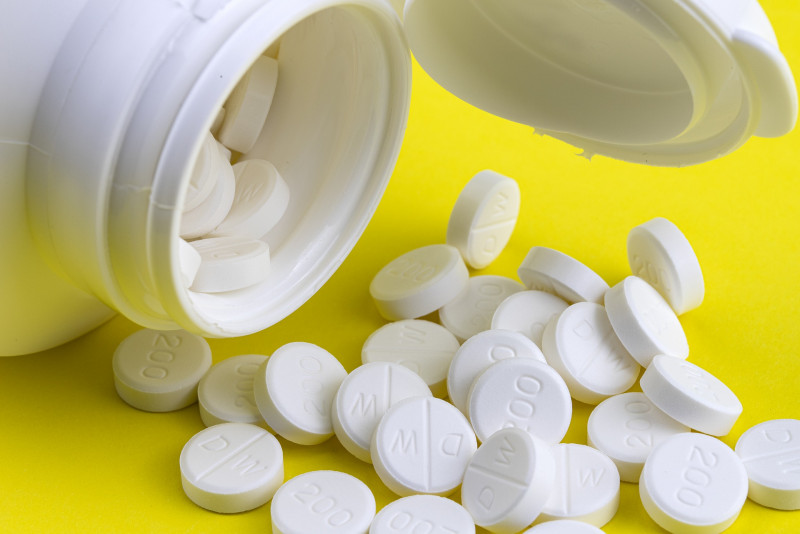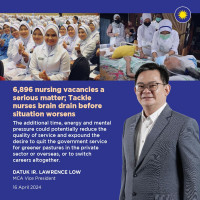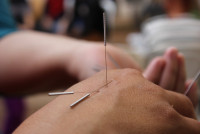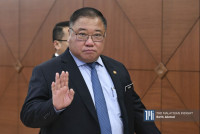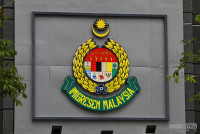
ACCESS to medicines is essential for achieving the fundamental human right of access to health. It is also recognised by the UN Sustainable Development Goals as a key element for achieving universal health coverage.
Malaysians have, over the years, paid increasingly exorbitant prices for medicines.
The patient price of a drug, i.e. the retail price, is determined by the price charged by the producer and markups along the supply chain. Pharmaceutical makers have kept increasing the price of medicines and this has been compounded by the rise in the markups along the supply chain.
The Health Ministry’s (MoH) Medicine Price Monitoring Survey in 2008 found that public sector medicine prices were 30% more than the international reference price (IRP), and those in the private sector were 190% more than the IRP.
The 2019 publication by Wong Shui Lin et al states that, in 2017, procurement prices in the public sector were up to 1.5 times the IRP, but up to 8.4 times in the private sector.
Markups are added onto the procurement price. The 2017 survey revealed that private hospitals had higher markups than retail pharmacies. Median retail markups in private hospitals (generics 166.9%; originators 51.0%) were higher than in retail pharmacies (generics 94.7%; originators 22.4%).
The health director-general has acknowledged that “the drive of free market economy and absence of pricing policy in which manufacturers, distributors, and retailers set medicine prices without government control has led to this scenario”, as he said in the 7th Asia Pacific Future Trends Forum 2014.
![Section 106 of the Private Healthcare Facilities and Services Act 1998 [Act 586] empowers the health minister to make regulations prescribing a fee schedule for private healthcare facilities or services. – Bernama pic, September 27, 2021](https://media.thevibes.com/images/uploads/covers/_extra-large/20210426-khairy_jamaluddin-bernama.jpg)
Pharmaceutical market
The total sales of pharmaceutical products in Malaysia grows by about 10% a year and is currently in excess of RM10 billion, comprising originator (55%), generic (21%), and over-the-counter medicines (24%). In 2018, government health facilities dispensed 31%. The balance was dispensed by pharmacies (36%), private hospitals (18%), and private medical practitioners (15%).
There needs to be a concerted effort to make medicines more affordable for the public healthcare system, and for patients using the private healthcare system.
MoH’s Pharmaceutical Services Programme, Medicine Prices Monitoring in Malaysia Survey Report 2017 has made recommendations for cost containment, including by improved procurement, price control, price information, and use of generics.
Procurement
Honesty, transparency, and competence are essential to ensure best value in procurement. This may be compromised by inaccurate needs analysis, poor vendor selection, inept contract management, and negligent stock monitoring, resulting in expired medication.
The 2015 Auditor-General’s Report highlighted several weaknesses in the MoH procurement process. These include procurement contracts based only on letters of acceptance or those signed after commencement of the contract, contracts lacking a late delivery penalty clause, incomplete payment vouchers, failure to verify medicines supplied, poorly arranged medicine stocks at pharmacies, and wasted drugs due to poor procurement planning. The auditor-general does not do an audit of all establishments. The audit and compliance units of MoH itself have to ensure that the auditor-general’s findings are not systemic.
The price monitoring in 2017 by the MoH Pharmaceutical Services Programme found that there were minimal procurement price variations (1%) in MoH establishments but 37% at university hospitals.
Pooled procurement significantly lowers costs by improving market efficiency and protecting against supplier collusion. It is a measure that the WHO recommends as a means of lowering medicine prices. Unfortunately, the MoH, Defence Ministry, and Higher Education Ministry’s teaching hospitals purchase their medicines individually. There needs to be pooled procurement by all government healthcare providers.
Price control
The 2020 WHO Guideline on Country Pharmaceutical Pricing Policies recommends 10 measures to improve affordable access to medicines, including regulation of markups across the pharmaceutical supply and distribution chain. This calls for governments to set rates for how much suppliers can add to the costs of medicines, as they sell the medicine along the supply chain and eventually to patients.
Section 106 of the Private Healthcare Facilities and Services Act 1998 [Act 586] empowers the health minister to make regulations prescribing a fee schedule for private healthcare facilities or services. However, the minister has not used this power to control the price of medicines supplied.
The MoH has sought the power to specifically regulate medicine prices. It is reported that this is provided for in the proposed Pharmacy Bill, which has been imminent for the past two decades! One reason for the law’s delay is the conflicting demand of doctors and pharmacists. Pharmacists want doctors to merely prescribe, and for dispensation to be their own exclusive privilege.
The Malaysian National Medicines Policy (3rd Edition, 2017-2021) states that the MoH will implement a Medicines Price Setting Mechanism by 2020, but this is yet to be achieved. Who else, besides the pharmaceutical industry, gains by this delay?

Price information
Competition and hence lower prices are facilitated by price comparison. In Malaysia, there is no requirement for private healthcare providers to even display the price of the medications they supply.
Thailand is known to have amongst the lowest private sector medicine prices in the world and achieves this by a raft of consumer-oriented policies. For example, beginning May 30, 2019, private hospitals in Thailand are required to display on their website or via QR code the prices of 3,000 drugs, as well as fees for medical supplies and services. Private hospitals are also required to inform the Internal Trade Department in advance before raising prices. The penalty for non-compliance is a fine of up to 10,000 baht (RM1,321) and/or jail not more than a year.
Singapore, which also permits doctors to prescribe and dispense medication, enables price comparison by stipulating that patients be provided an itemised bill stating the drugs supplied and the price of each.
In 2015, the DG issued an advisory that a prescription stating that a drug’s generic international nonproprietary name (INN) and the indication for its use should be given to all patients so as to permit them the choice to purchase the drug from the medical practitioner or from a retail pharmacy. This was implemented at MoH facilities. The advisory has no legal effect and hence is not complied with by recalcitrant private practitioners; it needs to be made legally binding.
Generic medicines policy
Generic medicines are cheaper than originator medicines and their use reduces the costs of medicines. In the US, 90% of prescriptions dispensed in 2019 were for generics; yet they comprised only 25% of the US$369.7 billion (RM1.5 trillion) spent on prescription drugs. Use of originator drugs only would have pushed the cost incurred to over US$1 trillion.
Malaysia already has regulations to ensure that generic drugs are identical to the branded drug in terms of efficacy, safety, usage, route of drug administration, pharmacokinetics, and pharmacodynamics.
The generic name is what doctors are trained to use. Nevertheless, as in many countries, many doctors are resistant to the use of generic drugs either because they regard innovator drugs as the “gold standard”, or are prevailed upon by the sales representatives of branded medicines.
The MoH sought to comprehensively address the use of generics in both the public and private sectors. The Malaysian National Medicines Policy 2nd Edition, 2012 states that the Generic Medicines Policy shall be implemented to foster healthy competition in medicines pricing and guide procurement of medicines. Among the measures to be implemented were:
- Prescribing in INN to be practised at all channels, and
- All dispensed medicines to be labelled prominently with the generic INN of the medicine with or without the brand name.
These were implemented in the public sector but not in the private sector where medicine prices are exorbitant. Also not implemented was a key element of the policy that called for generic substitution to be permitted and legislated for all interchangeable medicines.
The 3rd Edition of the National Medicines Policy 2017-2021 is a disappointment. It is a document of generalisations and platitudes. As regards the use of generics, it now merely states that the Generic Medicines Policy will be developed by 2020! Again, even this is still awaited.
Conclusion
The new health minister has to urgently implement measures to lower the price of medicines in the country.
The 3rd Edition of the MoH General Medicines Policy 2017-2021 is a regressive document. For guidance, the minister needs to refer to the 2nd edition published in 2013 and implement the recommendations contained in the Medicine Prices Monitoring in Malaysia Survey Report 2017.
Even just a 10% reduction in medicine prices will save Malaysian patients at least RM1 billion a year. – The Vibes, September 27, 2021
Datuk Dr Sothi Rachagan is an emeritus professor and former dean of the Faculty of Law, University Malaya; vice-chancellor of Perdana University and Nilai University, and president of the International Association of Consumer Law. He serves on numerous international consumer protection bodies



